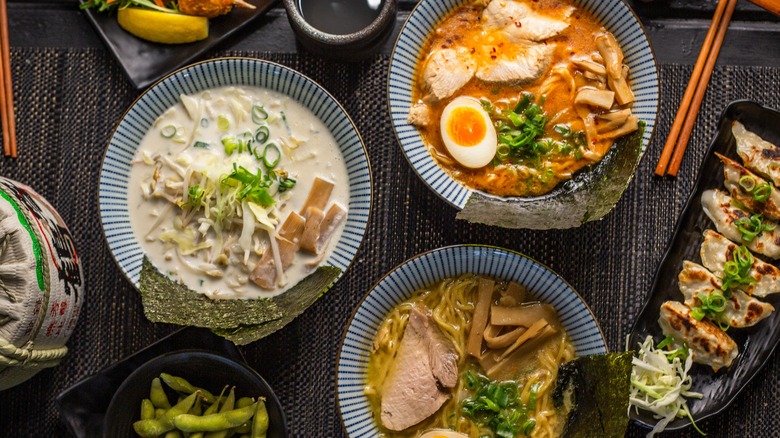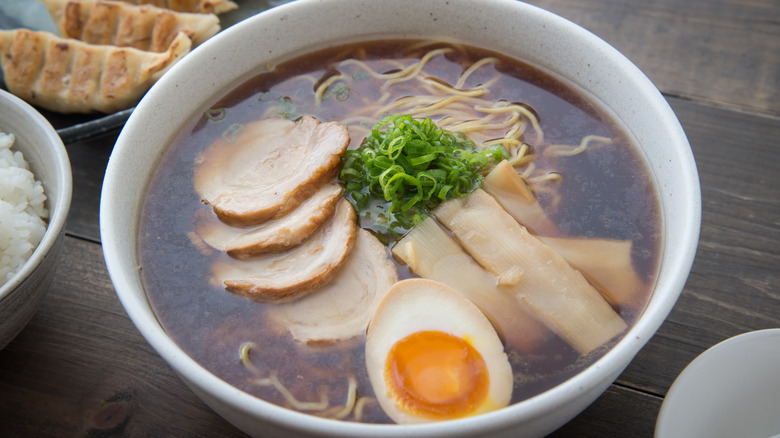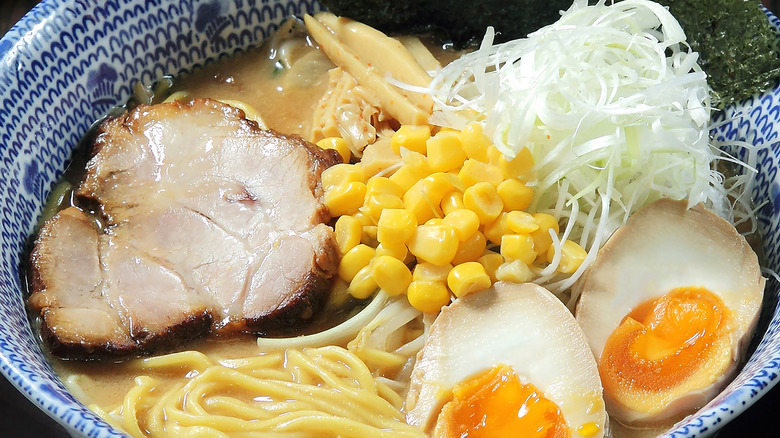Tokyo Vs. Sapporo Ramen: What's The Difference?
The Japanese cities of Tokyo and Sapporo couldn't be more different from one another. Tokyo is the city we all think of when we think of Japan. It is perhaps the most populated city in the world, home to some 37 million people, per World Population Review. Aside from being the national capital, Tokyo was named the Best Big City to Visit for 2019 by Condé Nast Traveler for its fashion, shopping, numerous sights, and, of course, its sushi and ramen (via Insider).
Sapporo is the complete opposite. Located on Japan's northernmost island, Hokkaido, Sapporo is a smaller city with a slower pace of life, a stable job market, and easy access to Hokkaido's wild surroundings, according to ASabbatical. Though Sapporo has its share of the four seasons, it can get brutally cold in the wintertime, which is where the city's legendary love of a hot bowl of ramen comes into play.
The two cities, apart from being markedly different in scale and culture, each have their own unique spin on ramen that is dictated by history and their locations within Japan. From the ingredients flavoring the broths to the style of noodles to the meats or veggies placed on top, a blindfolded taste test of any discerning ramen eater will immediately be able to tell the difference between a bowl of ramen from Sapporo and a bowl of ramen from Tokyo.
Tokyo-style ramen
One of the first things to understand about Tokyo-style ramen is that it is very much influenced by its neighbor across the bay, Yokohama. Yokohama plays an important role in ramen's history as it was the busy port to which many Chinese immigrants arrived during the Meji Restoration Era, bringing their noodles with them. It is from Yokohama that ramen's popularity began to spread during the late 1800s, and Tokyo saw its first ramen shop open in 1910, per Yokocho.
According to Serious Eats, the chief flavoring of both Yokohama and Tokyo ramen is shoyu, a popular Japanese soy sauce originating in Yokohama. The similarities between the two ramens part ways here, however, as Yokohama ramen is heavier on broth and meat than Tokyo. The broth of Tokyo ramen is medium-bodied and based on pork, chicken, or dashi, which is a broth made of sea kelp and dried bonito flakes, and the noodles used are curly and wide. Overall, Tokyo ramen is one that takes its cues from history and stands as one of the earliest examples of ramen in Japan.
Sapporo style ramen
Sapporo ramen has a more recent, but no less interesting, origin than its Tokyo cousin. According to MasterClass, in the aftermath of World War II, ramen flavored with miso, which is a paste made of fermented soybeans, was invented in Sapporo. By the 1960s, miso-flavored broth became so popular that it became recognized as one of the three types of tare, or seasonings, for ramen, alongside shio (salt) and shoyu (soy sauce). Since it's derived from soybeans, miso is a fantastic additive for vegetarians and vegans looking to partake in a bowl of ramen, provided the broth itself is not animal-based.
Sapporo ramen is not simply dictated by miso broth. Its heartiness goes hand-in-hand with the cold Hokkaido winters. According to Serious Eats, Sapporo ramen is made with thick noodles drowned in a rich broth of chicken, pork, or seafood. The miso, specifically red miso paste, is added, and the ramen is topped with a combination of cabbage, ground pork, bean sprouts, soft-boiled eggs, and sweet corn. Sometimes a knob of butter is added to give the broth some added richness. In spite of its relatively short history, you can find this miso-based ramen across the islands of Japan, even as far south as Kyushu.


